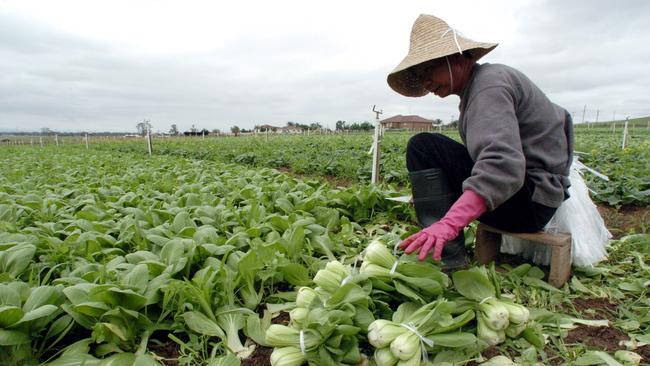Migrant farm workers to be offered pathway to permanent residency
The visa will create a ‘huge structural shift’ in the sector’s workforce that will boost investment confidence, Agriculture Minister David Littleproud says.

Australia’s long-awaited agriculture visa will offer temporary foreign workers in the sector a pathway to permanent residency for the first time, in a significant shake-up of the nation’s migration program.
The specialist visa for farm workers was negotiated alongside Australia’s free-trade agreement with Britain, which ended the requirement for British backpackers to work on farms for 88 days if they wanted to stay in Australia for two years. The Nationals’ support for the deal was contingent on the federal government creating a visa to tackle chronic workforce shortages that would be exacerbated by scrapping the requirement.
Agriculture Minister David Littleproud said the visa would create a “huge structural shift” in the sector’s workforce that would boost investment confidence.
“This is about the next generation of migrants who will build regional Australia,” he said.
“We want to build these jobs in regional Australia and build the population and capacity of regional Australia with these jobs. So the pathway to permanent residency is an exciting tool.”
The new visa will be extended beyond horticulture to provide extra workers for the meat processing, fisheries and forestry sectors. It will start on September 30 and apply to skilled, semi-skilled and unskilled workers for a three-year period. Workers who wish to commit to working beyond three years in the sectors would be given a route to permanent residency.
British backpackers had provided the agricultural sector with up to 10,000 workers a season. The Nationals hope the visa will not just replace the 10,000 workers who will be lost but also stabilise workforce shortages, which are estimated to be about 30,000 workers in agriculture industry.
The sector has long called for a specialist farm visa, with closed borders worsening labour shortages and resulting in inflated food prices. A report this month by the government joint standing committee on migration called for fewer restrictions for the hiring of skilled migrantsto tackle labour shortages. It also recommended a pathway to permanent residency for all people who come to Australia on a temporary skills visas.
Mr Littleproud said the new visa scheme would supplement the Pacific Labour Scheme, which he predicted would still take priority for seasonal labour.
The government plans to allow workers participating in the agriculture visa scheme to travel to Australia on a subclass of the 403 temporary work visa to expedite the process before it is legislated.
The scheme will begin by allowing employers to source workers from Southeast Asian nations and the UK before being extended to other countries.
“We’ll start bilateral [agreements] with countries straight away and some will be quicker than others based on our existing relationships,” Mr Littleproud said. “But there’s nothing stopping countries like South Korea coming into the program as well.”
Mr Littleproud said the success of the program would rely on states accelerating their quarantine models to ensure extra workers could be safely brought into the country.
He noted all premiers and chief ministers had agreed in December they would quarantine agriculture workers in addition to their arrivals caps.






